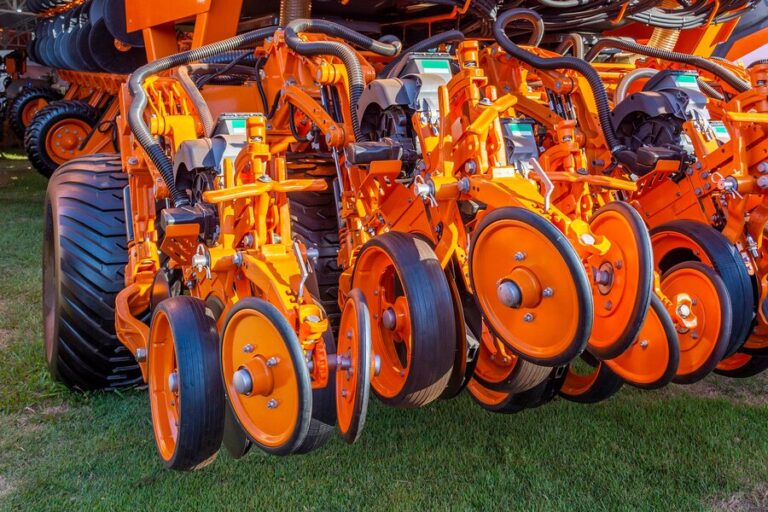Ultimate Tractor Transmission Parts Manual

Introduction: Understanding Tractor Axle Parts and Their Importance
Tractor transmission parts are the heart of the vehicle’s drivetrain, responsible for transmitting power from the engine to the wheels. They control speed, torque, and direction, ensuring efficient power delivery, maneuverability, and safety. Transmission systems are designed to withstand heavy loads, rough terrains, and continuous operation, making them essential for agricultural and industrial machinery. A well-maintained transmission system enhances fuel efficiency, reduces operational costs, and extends the lifespan of the tractor. This comprehensive manual provides a detailed breakdown of tractor transmission parts, their functions, maintenance requirements, and common issues. Whether you’re a farmer, mechanic, or equipment operator, understanding transmission systems is crucial for optimizing performance and minimizing downtime.
What Are Tractor Transmission Parts and Their Functions?
Tractor transmission parts are the heart of the vehicle’s drivetrain, responsible for transmitting power from the engine to the wheels. They control speed, torque, and direction, ensuring efficient power delivery, maneuverability, and safety. Transmission systems are designed to withstand heavy loads, rough terrains, and continuous operation, making them essential for agricultural and industrial machinery. A well-maintained transmission system enhances fuel efficiency, reduces operational costs, and extends the lifespan of the tractor. This comprehensive manual provides a detailed breakdown of tractor transmission parts, their functions, maintenance requirements, and common issues. Whether you’re a farmer, mechanic, or equipment operator, understanding transmission systems is crucial for optimizing performance and minimizing downtime.
Why Proper Maintenance of Transmission Parts is Crucial
Proper maintenance of transmission parts is essential for preventing mechanical failures, reducing wear and tear, and ensuring safe operation. Neglecting transmission maintenance can lead to costly repairs, increased fuel consumption, and safety risks. Regular inspection, lubrication, and timely replacement of worn-out components enhance performance, durability, and operational efficiency. Understanding the importance of transmission maintenance helps in optimizing productivity and minimizing downtime.
Types of Tractor Transmissions and Their Applications
There are several types of tractor transmissions, each designed for specific agricultural tasks, terrains, and power requirements. The most common types include Manual Transmission, Hydrostatic Transmission, Powershift Transmission, and CVT (Continuously Variable Transmission). Each type provides unique features, advantages, and operational control. Understanding the different types of tractor transmissions helps in selecting the right system for your application, ensuring optimal performance and fuel efficiency.
Manual and Synchronized Transmissions
Manual transmissions use a series of gears and a clutch to control speed and torque. They provide precise control over power delivery, making them ideal for heavy-duty applications and rough terrains. Synchronized manual transmissions are designed with synchronized gears, allowing smooth and easy shifting without grinding. They are widely used in older tractor models and budget-friendly machines.
Hydrostatic and Powershift Transmissions
Hydrostatic transmissions use hydraulic fluid to transfer power from the engine to the wheels, offering infinite speed control and smooth acceleration. They are ideal for tasks requiring variable speed and maneuverability, such as mowing, loading, and landscaping. Powershift transmissions use planetary gear sets and hydraulic clutches to enable shifting without clutch engagement, providing uninterrupted power flow and faster speed changes.
Key Components of Tractor Transmission Systems

Clutch: Engaging and Disengaging Power Transmission
The clutch is responsible for engaging and disengaging power transmission between the engine and the gearbox. It allows the driver to change gears smoothly without damaging the gearbox. There are two main types of clutches used in tractors: Single-Plate Clutch and Dual-Plate Clutch. Single-plate clutches are used in smaller tractors with lower torque requirements, while dual-plate clutches provide higher torque capacity for heavy-duty applications.
Gearbox: Controlling Speed and Torque
The gearbox is a complex system of gears and shafts that control speed, torque, and direction. It allows the driver to select different speed ratios, enabling the tractor to operate efficiently in various terrains and tasks. There are several types of gearboxes, including Sliding Mesh Gearbox, Constant Mesh Gearbox, and Synchromesh Gearbox. Proper maintenance of the gearbox, including lubrication and inspection, ensures smooth gear shifting and power delivery.
Hydraulic Systems in Tractor Transmissions
Hydrostatic Transmissions: Infinite Speed Control
Hydrostatic transmissions use hydraulic pumps and motors to control speed and direction, providing infinite speed control without shifting gears. They are ideal for tasks requiring variable speed and smooth acceleration, such as mowing, loading, and landscaping. Proper maintenance of hydraulic pumps and fluid levels ensures reliable performance and operational efficiency.
Powershift and CVT Systems: Seamless Power Delivery
Powershift transmissions use hydraulic clutches and planetary gear sets to enable gear changes without clutch engagement, ensuring seamless power delivery. CVT systems use hydraulic and mechanical components to provide continuously variable speed ratios, optimizing fuel efficiency and performance. Regular inspection and maintenance of hydraulic systems prevent leaks, pressure drops, and component wear.
Common Issues and Troubleshooting for Tractor Axle Parts
Tractor axle parts are exposed to heavy loads, rough terrains, and environmental stress, making them susceptible to wear and damage. Common issues include Noise and Vibration, Leaking Seals, Differential Failures, and Bearing Wear. Identifying and troubleshooting these issues promptly prevents mechanical failures, reduces downtime, and extends the lifespan of the axle system. Regular inspection, maintenance, and timely replacement of worn-out components are essential for ensuring safe and reliable tractor operations.
Diagnosing Noise and Vibration in Axle Systems
Unusual noise and vibration in axle systems are often caused by worn-out bearings, damaged gears, or misaligned shafts. These issues can lead to mechanical failures and safety risks. Diagnosing noise and vibration requires inspecting bearings, gears, and mounting points for wear, misalignment, or damage. Proper lubrication and timely replacement of worn-out parts prevent further damage and ensure smooth operation.
Identifying and Fixing Leaking Seals
Leaking seals are a common issue in axle systems, leading to fluid loss, contamination, and reduced lubrication. This can result in overheating, increased friction, and component wear. Identifying and fixing leaking seals involve inspecting the axle housing, differential, and wheel hubs for cracks, damage, or worn-out seals. Replacing faulty seals and maintaining proper fluid levels prevent leaks and ensure reliable performance.
Conclusion: Maintaining and Optimizing Tractor Transmission Parts
Proper maintenance of tractor transmission parts is essential for maximizing performance, safety, and durability. Regular inspection, lubrication, and timely replacement of worn-out components prevent mechanical failures, reduce downtime, and extend the lifespan of the transmission system. Choosing high-quality and compatible transmission parts ensures reliable power delivery, fuel efficiency, and operational safety. By understanding the functions, types, and maintenance practices of transmission systems, farmers and equipment operators can achieve optimal productivity and profitability.
